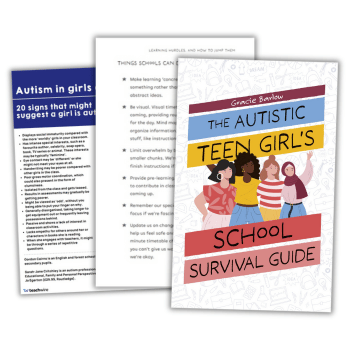SEND review green paper – an explainer

How will the government’s enquiry into special educational needs and disabilities really affect primary schools?

- by Alison Willett
- Former LA advisory teacher and education director at nasen

On 29 March 2022, the Department for Education and the Department of Health and Social Care released the long-awaited, much anticipated green paper, SEND review: right support, right place, right time, for consultation.
It is no secret that the current system of provision and support for children and young people with special educational needs and disabilities (SEND) isn’t working well enough.
We know this from many indicators, not least the poor educational outcomes for many children and young people with SEND.
The green paper itself refers to academic attainment disparities, including the fact that only 22 per cent of KS2 learners with SEN reached the expected standard in reading, writing and mathematics in 2018/19.
While the green paper recognises that the current system is driven by a hard-working, dedicated workforce, who are committed to delivering excellent support, it also states that the experiences and outcomes of children with SEND are still poor, and that good practice is not the norm everywhere.
Its proposals aim to create a fully inclusive system, starting with improved mainstream provision, and prompt access to targeted support.
Context and aims
Underlining the need for earlier identification, part of the government’s proposed solution lies in further investment in family hubs, and in training more SENCOs for Early Years settings.
Good primary education is undoubtedly crucial in ensuring that children thrive and achieve – providing high-quality teaching that is inclusive of all.
The green paper considers:
- what provision for SEN is consistently made ‘ordinarily available’ in every class, in every school, by every teacher;
- the thresholds at which learners are identified as requiring SEN support, or an education, health and care plan (EHCP);
- how schools communicate with families and carers, and partner with them by way of co-production.
A common difficulty encountered by schools arises around achieving access to specialist support.
The green paper acknowledges this challenge, suggesting improvements that include the need to better understand the picture of demand for support for children with SEND from the therapy and diagnostic workforce.
Encouragingly, there is also a pledge to invest in new research on SEND classroom-based practice and thereby grow the collective understanding of ‘what works’.
Creating national standards
One of the government’s key proposals is to create consistent national standards around how needs are identified and met – arguing that far more children should be able to access support in their local mainstream setting without the need for an EHCP, or specialist provision.
National standards would specify what support should be ordinarily available in every school to ensure that the experience of every child with SEND is equitable, and that families know what to expect from every school. These standards would include:
- how/when a child is identified as requiring SEN support;
- clear processes for assessment;
- the support that should be made ordinarily available in mainstream education;
- the circumstances in which an EHCP is needed;
- the circumstances in which the involvement of a specialist setting is required.
Under the proposals, mainstream schools will also receive a package of tiered support from alternative provision settings, which includes targeted support on the addressing of behavioural needs, with potential for ‘on call’ advice, and extra provision such as self-regulation classes.
Improving EHCPs
Implementing the 2014 SEND reforms focused heavily on statutory provision, through the shift from Statements to EHCPs.
For many in schools, EHCPs subsequently became a key area of frustration and difficulty.
The freedom to work at a local level in the creation of EHCPs resulted in a broad range of approaches being employed, leading to varying content quality and processes that remain challenging to navigate – particularly when children move between local authorities (LAs), or within multi-academy trusts whose schools sit across several LAs.
The green paper talks of addressing these inconsistencies by introducing standardised EHCP templates.
There will also be a requirement to co-produce plans with families, carers and children, which moves us forward from the requirement in the current SEND code of practice (2015) in which LAs must consult the child and their parents or carers throughout the process of producing a plan.
This development might mean teachers need more opportunities to work collaboratively with families to decide upon provision.
Perhaps one of the most overdue proposals in the green paper is that of digitising EHCPs, enabling easy access for all contributors, including teachers.
This could help overcome the current barriers that arise during pupil transitions between schools, giving greater control to parents and carers by ensuring plans cannot be changed without their input.
Support for staff
For teachers and support staff, the prescription of ordinarily available provisions could be helpful; possibly taking the form of a framework of enabling strategies to support children with a wide range of needs, helping teachers to ensure access to learning for most children.
This development could encompass considerations such as lesson pace, language, use of visual cues, and the facilitation of multiple means to demonstrate learning.
Again, structuring nationally consistent processes for identification, assessment and SEN support could be particularly helpful for instances in which children – and teachers – move between schools and LAs, as well as empowering parents and carers to feel more confident in understanding what is expected of every school.
The hope would be for those standards to uphold a level of helpful consistency; giving firm guidance on when, how and why to assess for – and identify – SEN, for instance, whilst enabling schools to respond to the individual circumstances and needs of children.
Implications for schools
It’s important to recognise that many schools already have a robust repertoire of universal provision and SEN support.
For them, the national standards may be helpful in levelling the playing field between schools, and in challenging perceptions that some schools cannot provide for SEND.
School leaders, including SENCOs, will want to plan for the implementation of the standards, ensuring all staff offer the mandated provision.
Though we don’t yet know the details, this may include the adoption of universal teaching and learning strategies – such as breaking down tasks into manageable steps – and the provision of scaffolds; for example, with resources to support working memory.
Making it happen
Of course, just knowing how to facilitate access to high quality learning – and acknowledging why this is crucial – is not enough to ensure that change is efficiently implemented.
With the green paper consultation currently live, everyone has a chance to contribute, sharing their own experiences and insights.
If you want to make sure your voice is represented, join in with the SEND review consultation here.
Alison Willett is Education Director at nasen (the National Association for Special Educational Needs), a charity and membership organisation that includes leaders, SENCOs and teachers from over half of schools in England.
Follow nasen on Twitter @nasen_org










